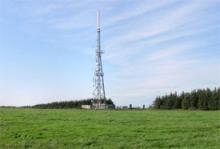Rural California Farms Need Fiber to be Fertile
In yet another reminder that fiber optics and wireless are complementary, not substitutes, we just read about rural California farms needing better telecommunications that the big companies have refused to provide.
This article offers a good introduction to why farms need access to the Internet. Modern farming takes advantage of gains in communications technology -- when it can and is not hobbled by a lack of modern infrastructure. For example:
An even more efficient use of water, said Bryon Horn, is to put moisture sensors into the soil beneath individual trees, like olives and almonds, so that each tree gets exactly the right amount of moisture. But that requires something that the valley lacks: wireless connectivity. In fact, even commercial cellphone coverage in the area is spotty. ... But doing so has been difficult. The larger telcos, she said, are not interested, and a consultant representing smaller telecommunications companies told Hogg and other officials that the large telcos make it almost impossible to expand to underserved areas. To buy wholesale Internet access from AT&T in the Salinas area, the consultant said, costs $136 per megabit per month compared to 50 cents per megabit per month in the city of Sunnyvale. [emphasis ours]Wireless works best where it has access to abundant wired connectivity. Just like plants need water, wireless towers need fiber to backhaul the data. Having AT&T as your only option is bad news. AT&T exists to make profits, not provide essential services at affordable rates. This is precisely why we argue that residents and businesses must have some voice in the telecom networks upon which they depend -- they are too important to entrust to massive corporations like AT&T or Comcast. The public built the roads that allow these farmers to get their crops to market and it ensured that they were connected to the electric grid. Despite entirely too many subsidies, the large providers have not only failed to offer a modern connection but are actually hindering others from doing it. It is time to stop subsidizing those companies and embrace the benefits of ownership by cooperatives or local governments that are locally accountable. From what we can tell, some in the San Joaquin Valley Regional Broadband Consortium get it and are trying to solve this problem for good.


